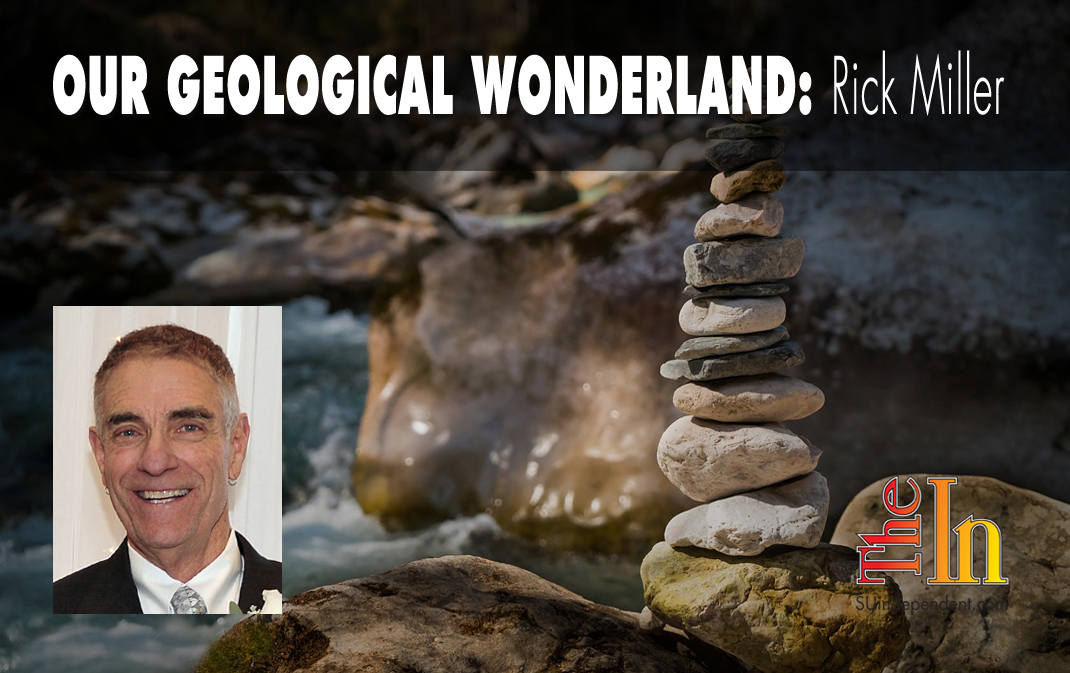
Our Geological Wonderland: The Virgin River flows through here
The Virgin River was originally named “Adams River” after President John Quincy Adams but was renamed “Virgin River” by John C. Fremont after Thomas Virgin, one of the first explorers in the region. In 2009, the Virgin River was designated as the first “wild and scenic river” in Utah.
The Virgin River is a tributary to the Colorado River, and after a trip of approximately 162 miles from its headwaters near Zion Canyon, it enters the Colorado River at the north end of Lake Mead in Nevada (Figure 1).
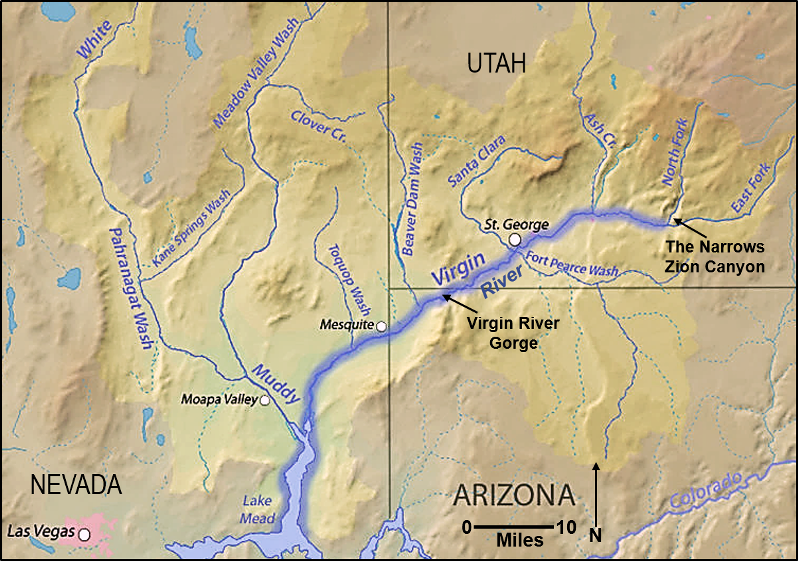
Streams and rivers flow over the surface of the Earth and form part of what is called the Hydrologic Cycle. In effect, this surface runoff moves water and carries various types of sediment that have been eroded from land areas. The moving water also erodes and shapes its own channel. The particular shape of a channel is a function of the type of rock present and the overall topography and the gradient (slope) of the ground surface. Over its course, the Virgin River has produced two main types of channels (Figure 2).

Along its route, the Virgin River has managed to erode two spectacular canyons. Much of this erosion occurred during the Ice Ages within the past 2.6 million years when climates were wetter and considerably more water flowed in the region. One of these canyons is the Narrows in Zion National Park, and the other is the Virgin River Gorge in Arizona. Both of these steep-sided canyons are quite spectacular. In other areas such as near St. George and in Nevada, the river flows in a wider, meandering flood plain.
These changes in flow are the result of the topographic gradient. In the Zion Canyon Narrows and the Virgin River Gorge, the topography and gradient are steeper; therefore, the river flows rapidly and erodes downward to produce a narrow, steep-sided channel. In areas with shallower topography, the river flows more slowly and erodes laterally to widen its banks and form a floodplain (Figure 3).

In the Zion Canyon area of the uplifted Colorado Plateau, the Virgin River has eroded a very narrow, steep-sided channel in the Navajo Sandstone (Figure 4). A popular place to hike is the Narrows, but it is an exceedingly dangerous place to be trapped during storms with flash flood possibilities and nowhere to escape. A testament to the power and volume of water in such flash floods is indicated by the size of the large boulders in the river channel. Note that there are two types of boulders, which are the result of two different types of erosion. Those transported by the river as part of what is termed “bed load” are generally smooth and somewhat rounded in outline whereas the boulders that have fallen from the canyon walls and have not yet undergone any transport by the water are angular and blocky (see arrows).
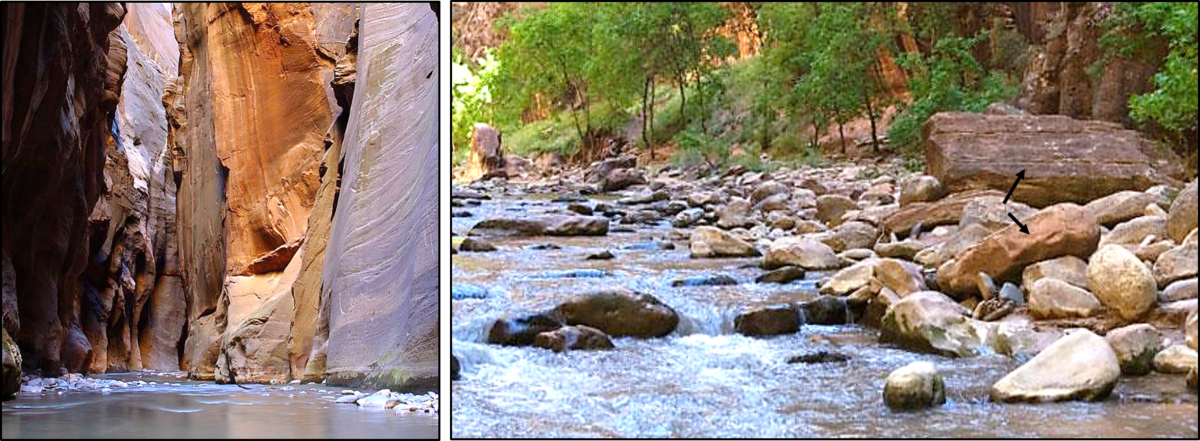
As the river flows out of Zion and reaches the relatively flatter portions around Hurricane and St. George, the velocity of the water decreases. In these areas, it has formed a wider channel and eroded mostly sideways to create a flood plain rather than cutting a steep-sided channel (Figures 5 and 6). During major storms such as ones that occurred in 2005 and 2010, this flood plain becomes partially or completely flooded.
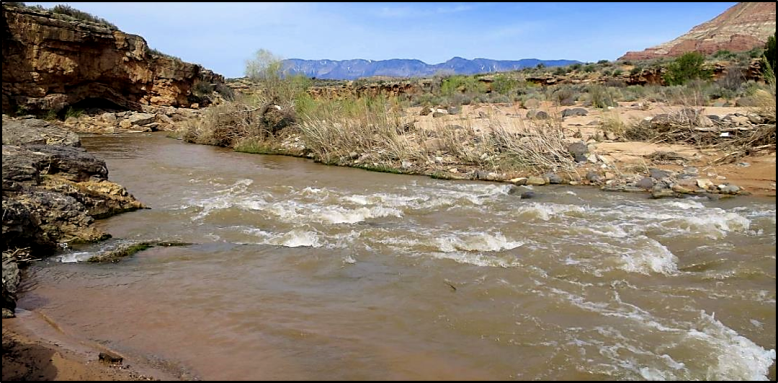

Significant downward erosion occurs again when the river reaches the Beaver Dam Mountains south of St. George and into Arizona. Because of the higher elevation of the mountains, the gradient has increased, and the river has eroded another steep-walled channel, known as the Virgin River Gorge (Figures 7 and 8). The river descends the west side of the mountains and flows out into the Arizona and then Nevada portions of the Virgin River Valley.
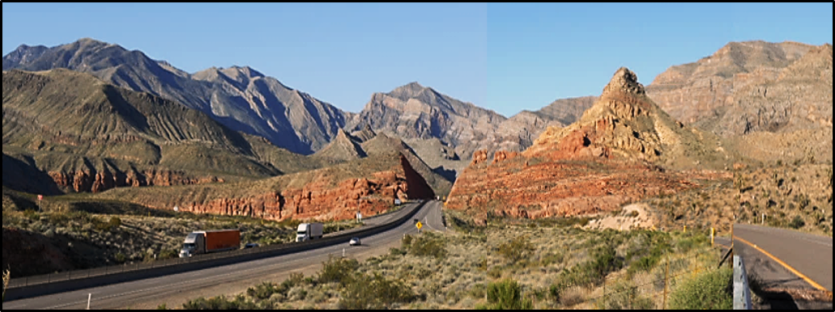

At this point on its journey, the river has eroded its way through two different highland areas, which include the Colorado Plateau and the Beaver Dam/Virgin Mountains (Figure 9). The term used to explain how that occurs is “antecedent stream.” In this model, the stream or river maintains its original course despite changes in underlying topography (Figure 10).
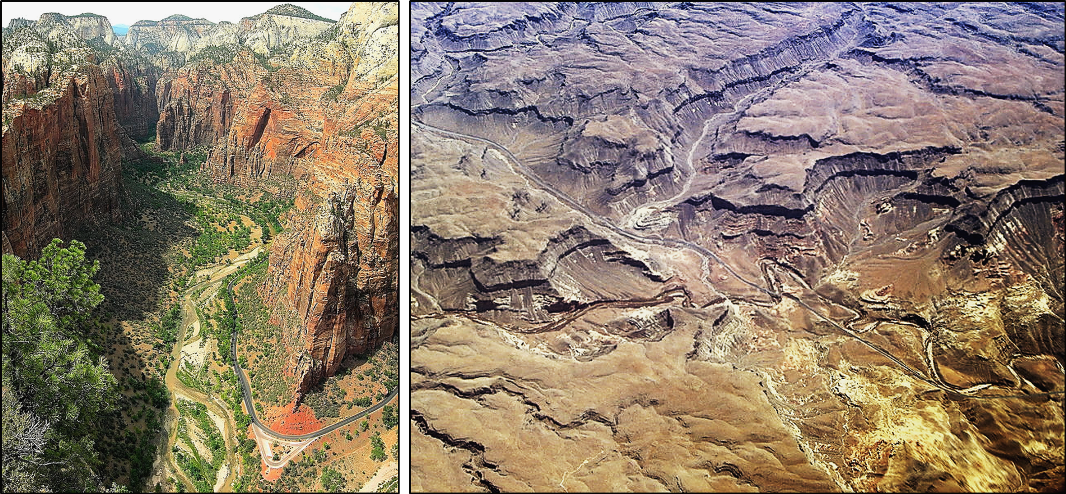

The river gradient decreases again when the river passes out of the mountains. The Beaver Dam tributary enters the river at Beaver Dam, Arizona, and the as the river reaches the Nevada Border at Mesquite, it has developed a fairly wide flood plain (Figure 11). The river continues and eventually enters Lake Mead near Las Vegas where it joins with the Colorado River (Figure 12).
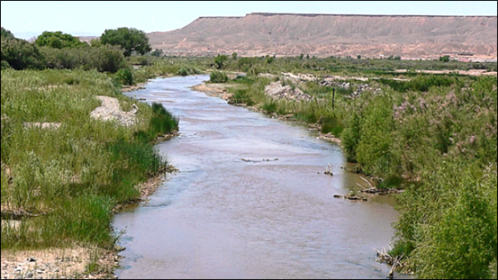
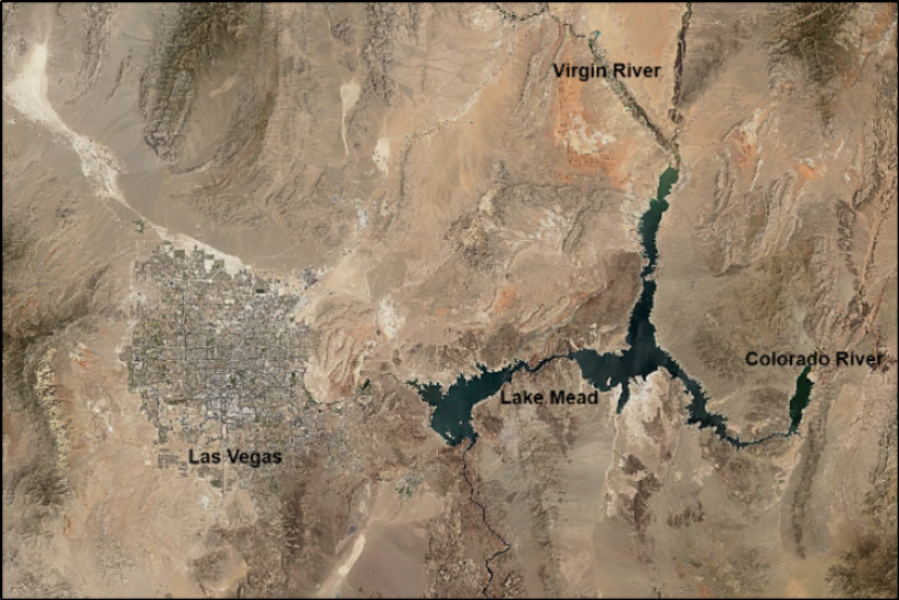
As noted in some of the images, the brown water of the Virgin River (as well as the Colorado River) indicates that sediment is being transported and eventually deposited in Lake Mead. So how many years will it take before Lake Mead becomes filled with this sediment and is no longer a viable reservoir?
Articles related to “Our Geological Wonderland: The Virgin River flows through here”
Our Geological Wonderland: A trip through the Virgin River Gorge
Our Geological Wonderland: Quail Lake and the Virgin Anticline




Love the earth story of the Virgin River. I still use what you taught me about storytelling today. Thanks Rick!!!